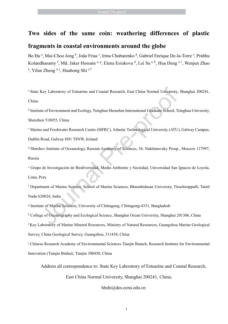

Environmental studies 2024 to Now





Click on the
octopus to return to
the top of the page

Authors: Darshika Manral, Ilse Bos, Mark de Boer, Erik van
Sebille.
Juvenile Kemp's ridley turtles, a critically endangered
species mainly living in the Gulf of Mexico, strand on the
Dutch coasts every year. This study examines several
instances over the last 15 years where juvenile turtles were
found alive but hypothermic during winter in the
Netherlands to understand how they were transported in
this state.


.
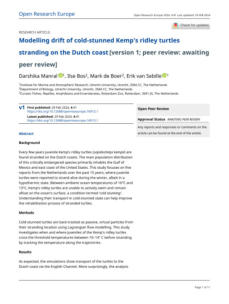

Authors: Zehao Wang, Defeng Zheng, Xingsen Guo,
Zhongde Gu, Yueqiang Shen, & Tingkai Nian
This study addresses the impact of submarine landslides
on underwater structures, focusing on bucket
foundations. It aims to fill a knowledge gap by developing
a fluid-structure coupling system using the coupled
Smoothed Particle Hydrodynamics (SPH)-Finite Element
Method (FEM) to analyze the displacement response of
these foundations during landslide impacts. Its authors
outline the methods used, the results obtained, and the
significance of the findings in understanding the dynamic
response and failure mechanisms of underwater
structures under extreme conditions.


.
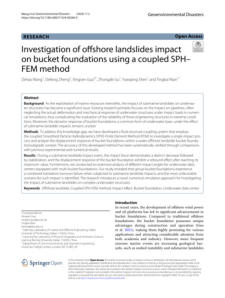
Authors:
Sven Bergmann, Matthias Brenner, Jennifer Susanne
Strehse, Tobias Hartwig Bünning, Edmund Maser, Philipp
Grassel, David Heuskin, David Brandt, Marco Berger,
Simon van der Wulp, Mathew Skellhorn, Polly Hil, Sven
Van Haelst, Maarten De Rijcke, Uwe Wichert
The text intends to inform the reader about ongoing
research efforts within the EU Interreg project North Sea
Wrecks (NSW) and its collaboration with the German
Aerospace Centre and the Institute for the Protection of
Maritime Infrastructures (DLR) to assess and understand
the environmental risks posed by shipwrecks and dumped
munitions in the North Sea and globally. It details the
methodologies used, such as historical document analysis,
visual inspections, and sample analysis.


.

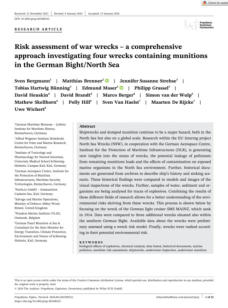

Authors: Sheng Wu, Nian Jiang, Shuai Zhang, Pingping
Zhang, Peng Zhao, Yang Liu, & Yanhui Wang
This document analyzes the technological feasibility and
potential environmental impacts of offshore floating
photovoltaic (PV) plants to highlight the advantages of
floating PV systems, particularly in marine environments,
and to address the current low technology readiness level
in this new field. It also seeks to explore the interactions
between offshore floating PV plants and the marine
environment throughout the entire life cycle of the PV
systems, from manufacturing to disposal.


.


Authors: V. Trinadha Rao, V. Suneel, Venkata Sai
Gulakaram, & Chilukuri Lakshmi Sravani
This study focused on the computation and analysis of
monthly climatological Lagrangian coherent structures
(cLCS) in the Bay of Bengal (BoB) using 24 years of ocean
current and wind data to reveal the cLCS associated with
seasonal monsoon currents and mesoscale processes,
validate these structures with satellite imagery and
modeled oil spill trajectories, and demonstrate their
application in predicting the transport and accumulation
zones of pollutants like oil spills


.
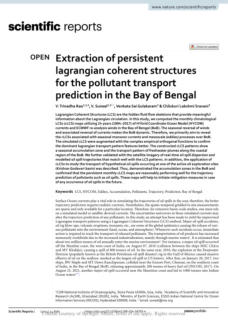

Authors:
Romain Stefanelli, Maria Rosa Beccia , Pier Lorenzo Solari,
David Suhard, Sophie Pagnotta, Aurelie Jeanson, Jean
Ulrich Mullot, Françoise Vernier, Christophe Moulin,
Marguerite Monfort, Jean Aupiai, Christophe Den Auwer
This study focused on understanding uranium
accumulation, speciation, and localization in marine biota,
specifically using mussels as sentinel species to assess the
environmental impact of uranium, particularly in marine
ecosystems, by employing various analytical,
spectroscopic, and imaging techniques. The study also
highlights the differences in uranium accumulation
between mussels from two different locations and outlines
future research directions to identify the proteins or
metabolites involved in uranium complexation.


.
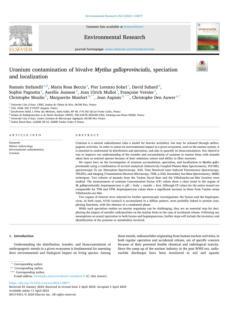
Authors: Changjing Fu, Yangming Xu, and Tianlong Zhao
This document discusses the findings from a flume model
test that examined the evolution pattern of riverbeds and
the mechanisms of local scour under unsteady flow
conditions to provide insights into the susceptibility of
pipelines to suspension during floods, the stages of this
suspension process, and the factors affecting erosion.
Additionally, it offers recommendations for enhancing
erosion resistance in pipeline-laying projects and suggests
that the study can serve as a reference for pipeline
engineering design and protection strategies.


.

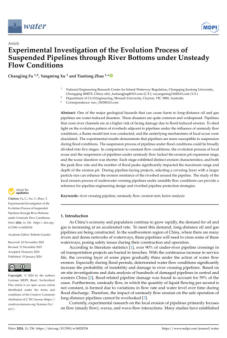
Authors: Jiarui Xie, Ruichao Xue, Fuqiang Niu, Benqing
Chen, and Yanming Yang
This article presents a study on the effects of high-intensity
impulsive noise from pile driving on fish, specifically
focusing on the large yellow croaker. It highlights the
importance of using advanced numerical acoustic models,
notably a 3D parabolic equation method, to accurately
predict underwater noise propagation in complex coastal
environments to demonstrate the inadequacy of simplistic
models and the necessity of considering three-
dimensional propagation effects to assess the
environmental impact on marine life accurately.


.

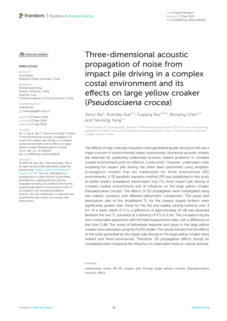

Authors: Muhammad Saladin Prawirasasra
This document thesis summarizes and highlights the key
features and findings of a series of scientific publications
related to the study of underwater vocalizations of
pinnipeds, the impact of ferry noise on ringed seals, the
effects of ship-radiated sound on pinnipeds, and the
analysis of wind-driven ambient sound spectra. It outlines
the specific focus of each publication and the ecological
and biological implications of the research conducted.


.
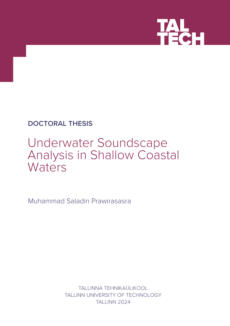
Authors: Han Tian, Junsheng Zhong, Jiangyuan Chen,
Yane Jiang, Jun Zhang, Wei Xie, Zuyuan Gao,
Yuchao Wang, Haozhen Liu, Sujing Wang, Fei
Zhang, Jie Yang, and Kedong Yin
This study documents the first recorded presence of Pacific
sleeper sharks in the deep waters off the southeast coast
of Hainan Island in the South China Sea. The study
involved using a dead cow as bait and a metal-framed
cage with cameras to observe the sharks' feeding
behavior. The findings indicate an expansion of the
known habitat range of this shark species and suggest
broader implications for understanding the geographic
connectivity and habitat ranges of large marine animals.
The study also highlights the potential impact of
anthropogenic influences, such as climate change, on the
distribution of marine species.


.

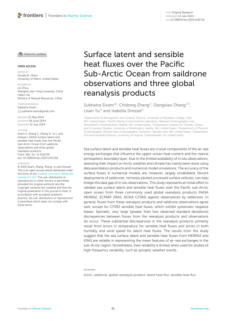

Authors: Subhatra Sivam, Chidong Zhang, Dongxiao
Zhang, Lisan Yu, and Isabella Dressel
This study evaluates the accuracy of sea surface latent and
sensible heat fluxes from three global reanalysis products
(NASA MERRA2, ECMWF ERA5, NOAA CFSR2) by
comparing them with observations from sail drones to
validate these reanalysis products in the context of the
Pacific sub-Arctic open ocean. It highlights discrepancies,
particularly with CFSR2, while suggesting that MERRA2
and ERA5 are generally reliable for representing mean air-
sea exchanges but may have limitations for high-
frequency variability studies.


.
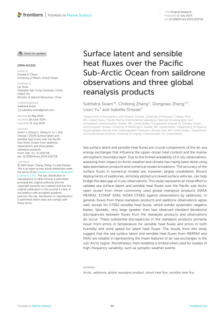

Authors: Martina Canessa, Rosella Bertolotto, Federico
Betti, Marzia Bo, Alessandro Dagnino, Francesco
Enrichetti, Margherita Toma, and Giorgio
Bavestrello
This study analyzes the impact of environmental and
human-induced stressors on the red gorgonian
Paramuricea clavata in the Mediterranean Sea. It discusses
the threats this species faces, such as heat waves and
fishing activities, and examines the correlation between
these stressors and the occurrence of epibiosis on the
gorgonian colonies. It also highlights the importance of
long-term monitoring to understand changes in marine
benthic communities.


.
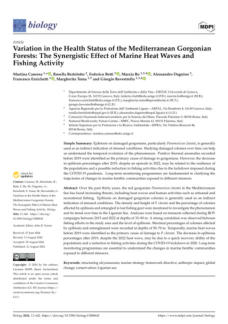
Authors:
Silvia Bossi, Luciano Blasi, Giacomo Cupertino, Ramiro dell
Erba, Angelo Cipollini, Saverio De Vito, Marco Santoro,
Girolamo Di Francia, and Giuseppe Marco Tina
This study analyzes the current state of monitoring
practices for floating photovoltaic (FPV) plants,
highlighting the need for standardized guidelines and
criteria for water quality monitoring and management. It
discusses the challenges and environmental impacts
associated with FPV systems, the importance of
monitoring key physico-chemical parameters, and the
potential of autonomous solutions for environmental
impact monitoring to identify gaps in the existing literature
and propose the development of a cohesive framework
for effective monitoring of FPV systems.


.


Authors: Michael C. Denes, and Erik van Sebille
The paper intends to describe and promote the features
and capabilities of the "plastic parcels" Python package to
inform about its functionalities for simulating the transport
and dispersion of plastics in the ocean, its integration with
the parcels framework, and its adaptability for various
computational environments. It also highlights the
package's modular design, user-friendly interface, and
potential applications in research and development
related to ocean plastic pollution modeling. Additionally, it
outlines future goals for the package, such as support for
macroplastics and cloud platform integration.


.

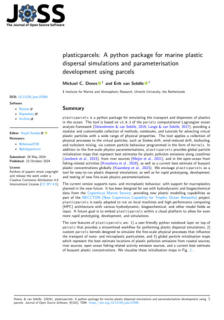



05 - Cellular adaptations of the scleractinian coral Madracis pharensis
to chronic oil pollution in a Mediterranean shipwreck.
Authors: Alessandro Nardi, Vasilis Resaikos, Magdalene
Papatheodoulou , Marta Di Carlo, Harini
Vedhanarayanan, Francesco Regoli, Stefania
Gorbi, and Carlos Jimenez
Chemical pollution in marine ecosystems affects stress
levels and interacts with climate change. This study
examined epibenthic communities near a shipwreck in
the Levantine Basin, comparing oil-contaminated and
clean areas. Results showed different community
structures over 11 years, with increased PAH levels in
impacted corals. The coral Madracis pharensis showed
adaptations to stress, but implications of these changes
are still unclear.
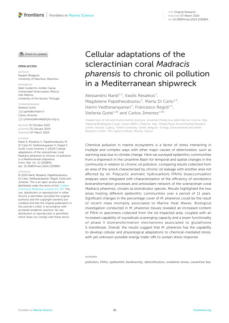



06 - Artificial structure selection by economically important reef
fishes at North Carolina artificial reefs.
Author: Ryan M. Tharp, Nathan J. Hostetter, Avery B.
Paxton, J. Christopher Taylor, and Jeffrey A.
Buckel.
Artificial reefs can help manage marine fisheries by
improving natural habitats. However, the selection of
structures for these reefs often lacks proper information.
From 2021-2022, 72 black sea bass, 34 gag, 27 greater
amberjack, nine almaco jack, and eight red snapper were
tagged near Cape Lookout, North Carolina. Black sea bass
showed little movement, while gag and red snapper
moved between structures. Greater amberjack and
almaco jack explored the most, favoring high relief
structures like vessels. These findings will aid managers in
selecting effective structures for artificial reefs.
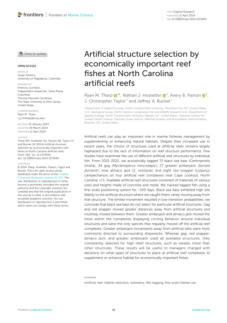



15 - An Icy Worlds life detection strategy based on Exo-AUV.
Authors: Bin Wang, & Hongde Qin
Icy Worlds like Europa and Enceladus may hold answers
to the search for life beyond Earth. Exo-AUV technology is
promising for detecting life in these icy oceans. This study
explores a hypothetical life detection mission on Europa,
focusing on goals, regions, and analysis needed for
success. It proposes strategies and outlines the technology
needed for Exo-AUVs, while addressing challenges and
suggesting a roadmap for their development to help
scientists find biosignatures and potential life forms.
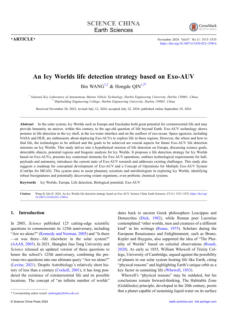



18 - An Assessment of Demersal Elasmobranch Occurrence and
Associated Habitats Using an Autonomous Underwater Vehicle
(AUV).
Authors: Jonathon Taylor, John A. Howe, James
Thorburn, Clive J. Fox, Christopher McGonigle,
Petra Rybanska
Plastic debris in coastal areas experiences weathering, but
the effects on different sides of the same plastic are not
well studied. This research collected 1573 plastic
fragments and found notable weathering differences
between exposed and shaded sides. The study revealed
that the sun-exposed sides showed more damage, with
increased cracks, while shaded sides remained smoother.
Results indicate uneven weathering, providing insights for
better predicting plastic degradation and informing
pollution reduction strategies.



20 - Benthic Feeding and Diet Partitioning in Red Sea Mesopelagic
Fish Resolved Through DNA Metabarcoding and ROV Footage.
Authors:
Kah Kheng Lim, Carlos Angulo-Preckler,
Christopher A. Hempel, Mohammad A. Qurban,
Vincent A. Pieribone, Carlos M. Duarte
Mesopelagic fish are important for carbon capture due to
their daily movements, but their diets are not well
understood in the Red Sea. This study looks at two
common species, lanternfish and lightfish, using DNA
analysis and video. Lightfish have a broader diet than
lanternfish, which mainly eat copepods. Both species also
consume other prey but differ in their dietary choices. The
study shows these fish feed on the sea floor, a rare
behavior. Their feeding helps carbon storage in the
ocean, highlighting the need for more research on their
ecological roles.



19 - Two sides of the same coin: weathering differences of plastic
fragments in coastal environments around the globe.
Authors:
Bo Hu, Mui-Choo Jong, João Frias, Irina Chubarenko,
Gabriel Enrique De-la-Torre, Prabhu Kolandhasamy, Md.
Jaker Hossain, Elena Esiukova, Lei Su, Hua Deng, Wenjun
Zhao, Yifan Zheng, Huahong Shi
Mesopelagic fish are important for carbon capture due to
their daily movements. This study looks at two common
species, lanternfish and lightfish, using DNA analysis and
video. Lightfish have a broader diet than lanternfish,
which mainly eat copepods. Both species also consume
other prey but differ in their dietary choices. The study
shows these fish feed on the sea floor, a rare behavior.
Their feeding helps carbon storage in the ocean,
highlighting the need for more research on their
ecological roles.


